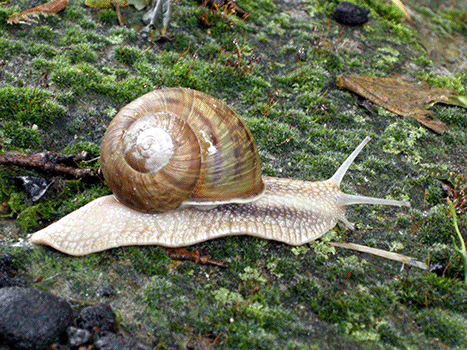Attack of the Giant Snails
Monday, April 15th, 2013April 15
It may sound like a science-fiction movie, but southern Florida truly is being attacked by giant snails—giant African land snails (Achatina fulica), to be precise. The shell of these snails are commonly as large as 7 inches (18 centimeters) in length and more than twice that size in diameter. The snails are an invasive species in Florida. They are voracious plant eaters that can be harmful to agricultural crops and natural ecosystems.

Some species of land snail can become an invasive pest. (c Shutterstock)
The snails were first spotted in Florida in September 2011. Since that time, 117,000 of them have been trapped by scientists from Florida’s Department of Agriculture and Human Services. The invasion is worrisome because the snails have no natural predators to reduce their population and an individual snail is capable of laying around 1,200 eggs at a time. The giant snail also harbors a parasite that can cause meningitis in humans. Humans can contract it by eating undercooked snails or by simply handling a snail.
Florida has had a previous run-in with this snail. In 1966, a child brought in three from Hawaii. His grandmother released them into her garden. Seven years later, the snail population had grown to 17,000. It took the state of Florida 10 years to eradicate the snails, at a cost of $1 million. Scientists have not determined how the current infestation came about.
Experts gathered in Gainesville, Florida, last week for a Giant African Land Snail Science Symposium to share information on the best methods of eradicating the pest. Florida is battling a number of other invasive species in addition to the snail, including the Burmese python and the Asian swamp eel (which is actually a fish and is not a true eel).
Additional World Book articles:


